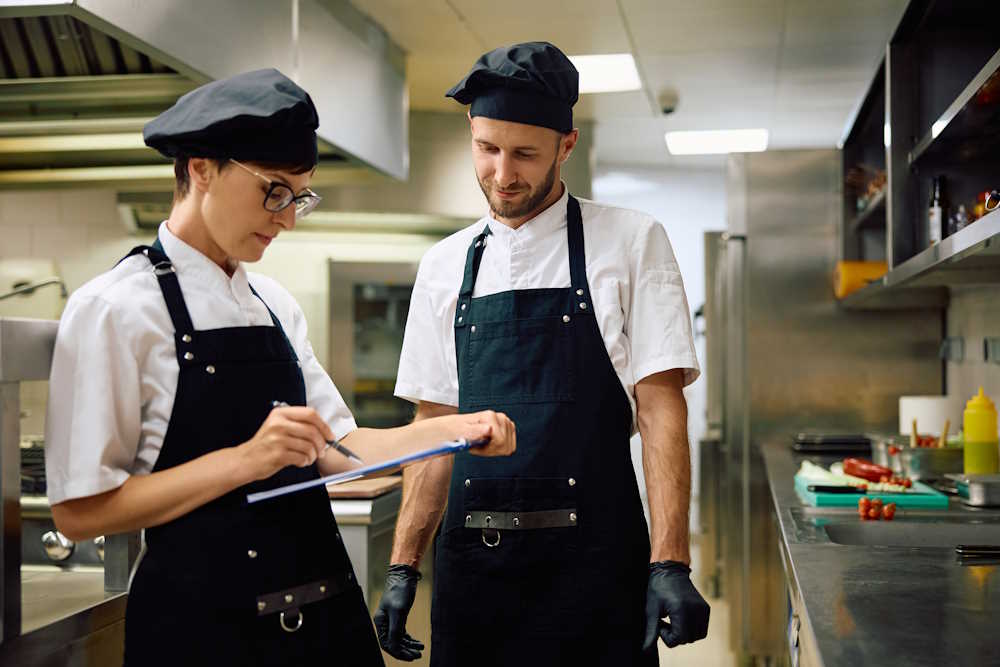As a commercial kitchen operator, ensuring your space is inspection-ready isn’t just about ticking boxes—it’s about safeguarding your business, protecting your customers, and meeting Australian food safety standards. Health inspections can feel daunting, but with the right preparation, they’re a chance to showcase the hard work that goes into maintaining a safe and clean kitchen.
This guide provides practical, actionable tips to keep your kitchen compliant and always ready for an inspection. Let’s dive in!
Understanding What Inspectors Look For
Health inspections in Australia are regulated by the Food Standards Code and conducted by local councils. Knowing what inspectors focus on can help you prioritise your efforts. Key areas include:
- Cleanliness: Ensure surfaces, equipment, and storage areas are spotless.
- Food Storage: Keep items properly labelled and stored at the right temperatures.
- Employee Hygiene: Staff should follow personal hygiene practices like handwashing and wearing protective gear.
- Pest Control: Have measures in place to prevent infestations.
- Documentation: Maintain records for cleaning schedules, pest control, and staff training.
Being familiar with these criteria puts you one step ahead.
Step 1: Master Cleanliness and Sanitation
Daily Cleaning Essentials
A clean kitchen isn’t just a legal requirement; it’s the foundation of food safety. Include these in your daily checklist:
- Sanitise countertops, prep surfaces, and cutting boards.
- Clean and disinfect appliances like blenders, toasters, and mixers.
- Mop floors to remove spills, grease, and debris.
- Empty bins and replace liners regularly to prevent odours and pests.
Deep Cleaning for Long-Term Hygiene
While daily cleaning keeps things tidy, kitchen deep cleaning tackles built-up grime in areas like:
- Exhaust Hoods and Filters: Regular degreasing prevents fire hazards.
- Cooking Equipment: Remove burnt-on residue from fryers and grills.
- Walls and Ceilings: Address grease splatter that often goes unnoticed.
If this feels overwhelming, consider professional services, who specialise in deep cleaning for Australian commercial kitchens.
Step 2: Ensure Proper Food Storage and Handling
Temperature Control
Keep your cold storage equipment running efficiently to maintain temperatures below 5°C for perishables. Regularly record temperatures to show compliance.
Prevent Cross-Contamination
Assign specific tools (e.g., cutting boards) for raw and cooked foods, and ensure proper labelling in storage areas. Simple measures like these prevent costly mistakes.
Manage Inventory Effectively
Rotate stock using the First In, First Out (FIFO) method to minimise waste and avoid expired products. Regular checks can help identify inefficiencies.
Step 3: Prioritise Employee Hygiene and Training
Reinforce Personal Hygiene
Your team plays a crucial role in maintaining standards. Ensure they:
- Wash hands thoroughly before and after handling food.
- Wear clean uniforms and hair nets.
- Stay home if unwell to avoid contamination risks.
Ongoing Training is Key
Provide regular training sessions to keep staff updated on food safety protocols and changes to regulations. Maintain training logs as proof of compliance.
Step 4: Maintain Equipment Regularly
Conduct Routine Inspections
Check refrigerators, ovens, and ventilation systems for wear and tear. Broken seals or grease build-up can quickly turn into compliance issues.
Stick to a Cleaning Schedule
Assign specific tasks for each piece of equipment, such as cleaning fryers weekly and ovens monthly. Regular maintenance keeps equipment efficient and compliant.
Use Professional Servicing
For complex systems like cleaning exhausts and ducting, engage professional kitchen cleaning companies. Their expertise ensures your equipment stays in top condition.
Step 5: Stay on Top of Pest Control
Prevent Problems Before They Start
Seal gaps, keep bins covered, and ensure food storage areas are clean and secure. Eliminating crumbs and residues reduces the risk of attracting pests.
Schedule Professional Inspections
Even if you don’t see pests, regular visits from a pest control service can identify potential issues early. Log these visits for health inspections.
Step 6: Keep Accurate Documentation
Record Everything
Use logs to track cleaning schedules, equipment checks, and staff training. Accurate records show inspectors you’re proactive about compliance.
Organise Compliance Documents
Keep all certificates, previous inspection reports, and pest control records in one place. Being organised can make inspections run smoother.
Step 7: Leverage Professional Cleaning Services
When it comes to tackling grease, grime, and hard-to-reach places, professional cleaning services are invaluable. They can offer:
- Kitchen Canopy Cleaning: Remove grease
- build-up for improved ventilation.
- Filter Exchange Services: Maintain efficiency and air quality.
- Exhaust System Cleaning: Reduce fire risks and stay compliant.
By partnering with experts, you can focus on running your kitchen while they handle the heavy-duty cleaning.
Step 8: Conduct Self-Inspections
Don’t wait for inspectors to identify issues – be proactive! Regular self-inspections help you spot and fix problems early. Use a checklist to evaluate:
- Cleanliness of surfaces and equipment.
- Food storage and labelling.
- Staff adherence to hygiene protocols.
Conclusion
Preparing your commercial kitchen for a health inspection doesn’t have to be stressful. By following these expert tips, you can keep your kitchen clean, compliant, and ready for anything.
For professional cleaning services tailored to Australian commercial kitchens, contact Lotus Commercial. With their support, you can focus on delivering exceptional food while staying inspection-ready.

